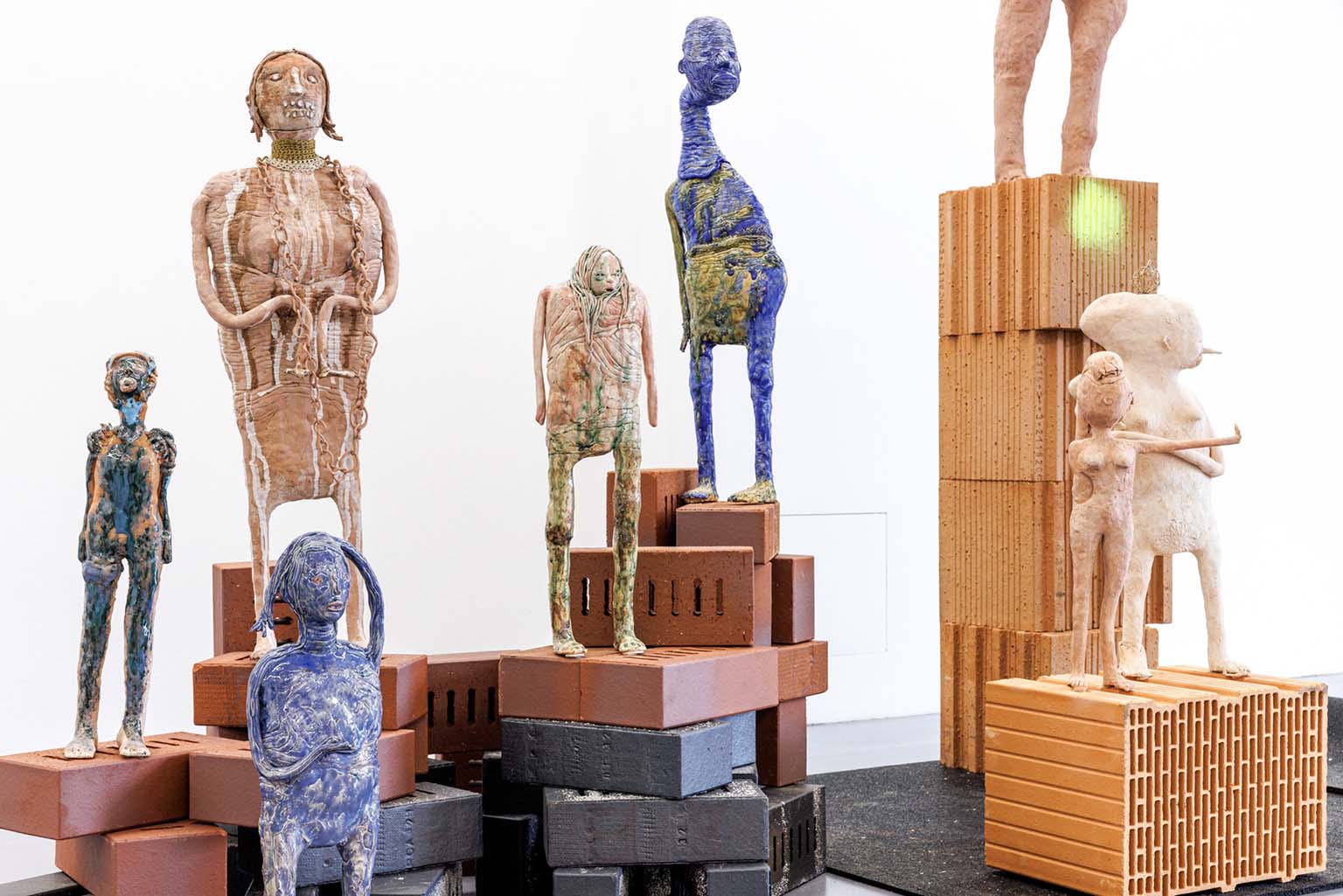
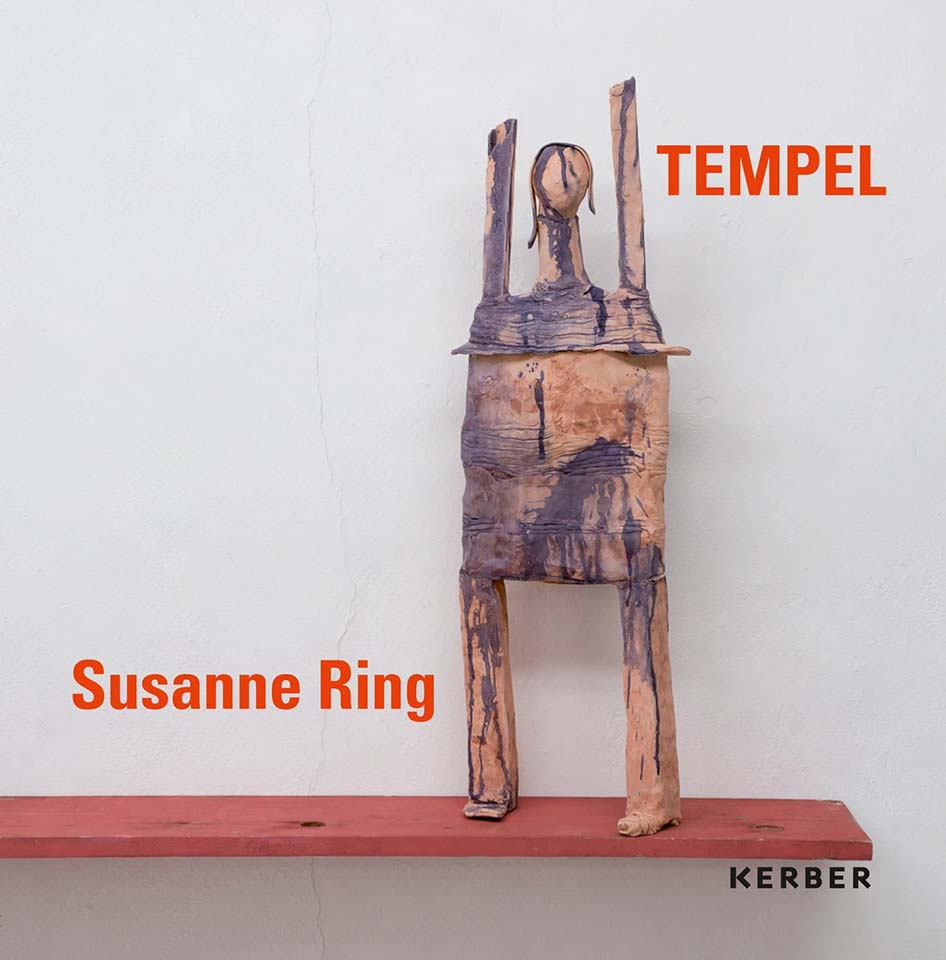
TEMPEL | Susanne Ring Published by Kerber October 2024 | € 35.00

With the release of her book TEMPEL, artist Susanne Ring (b. 1966, Berlin) presents her ceramic figures, installations, and paper portraits beyond the gallery space, passing them from her hands into ours. This gorgeous 128-page volume, with a cerebral introduction by author Stefan Lüddemann, contains spacious photography that invites the reader to sit and take time with Ring’s recent retrospective.
Ring greets the viewer with questions, leaving one wanting more. Her figures are vessels, one wants to look inside and know the contents, to go beyond the gallery and into genesis.
Lüddemann elaborates this inspired curiosity:
Ring’s sculptures should not be understood narratively in an external sense. They instead invite empathetic examination. And questioning comparison: How do I feel in my body? How do I define my relationship to other individuals, to space?
Each Body Its Own Temple: Susanne Ring’s Figures and New Forms of Sociality, p.10
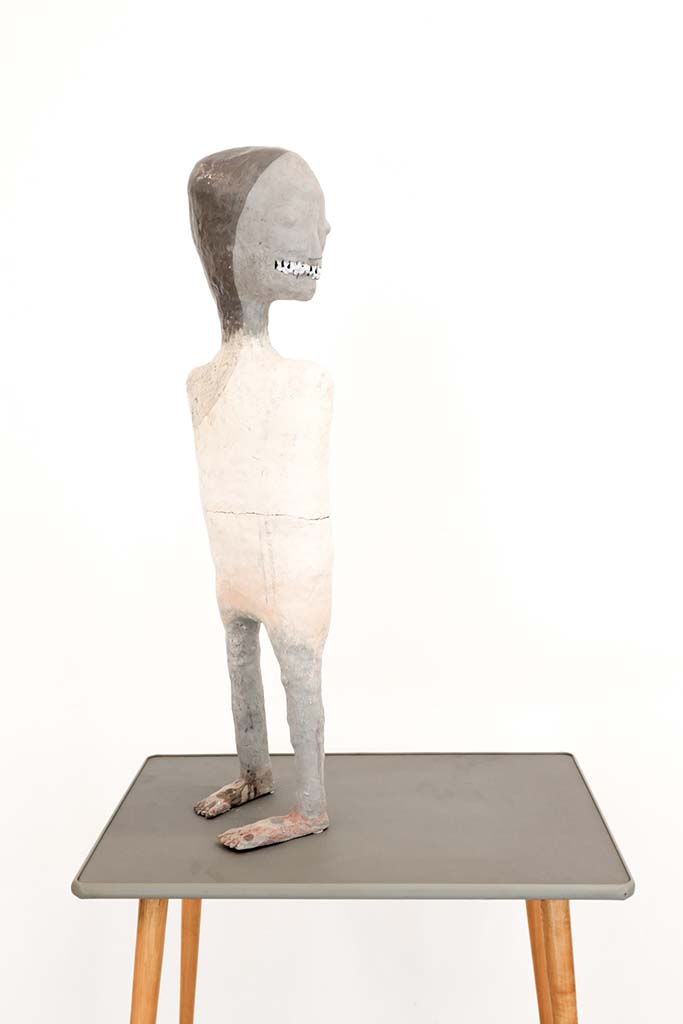
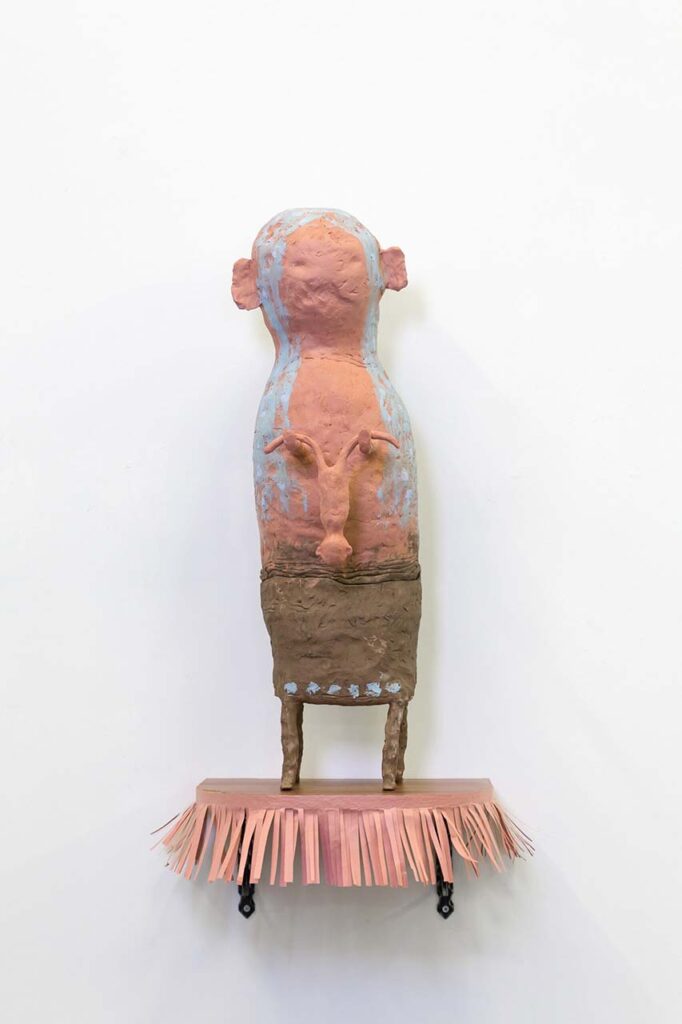
Ring began her relationship with ceramics in the mid-1990s, when clay was “the last thing you should do as an artist,” she remarks. As digital art and photography became prominent, the crafts and their technical training were fading in significance. Ring found clay by chance: an unexpected visit with a friend led her to her university’s ceramics studio. By day’s end, she had sculpted her first figures: four dogs, one after the other. “I felt so good working with it,” she recalled, and she has followed that feeling ever since.
As with her first encounter with clay, figures are revealed through a variety of inspirations. Feeling still plays a part: “Sometimes it’s just very intuitive. I just start." At other times, fragments emerge from various sources. She keeps a sketchbook, but rather than working directly from a drawing, a fragment of a sketch might expand into an unplanned sculpture that’s complete when it “feels” complete. Sometimes, a fragment of someone’s life story filters in through her work. At other times, past sculptures of her work pose an interesting element worth following again. “It depends on how I feel, what I need, and if I have time,” Ring reveals.
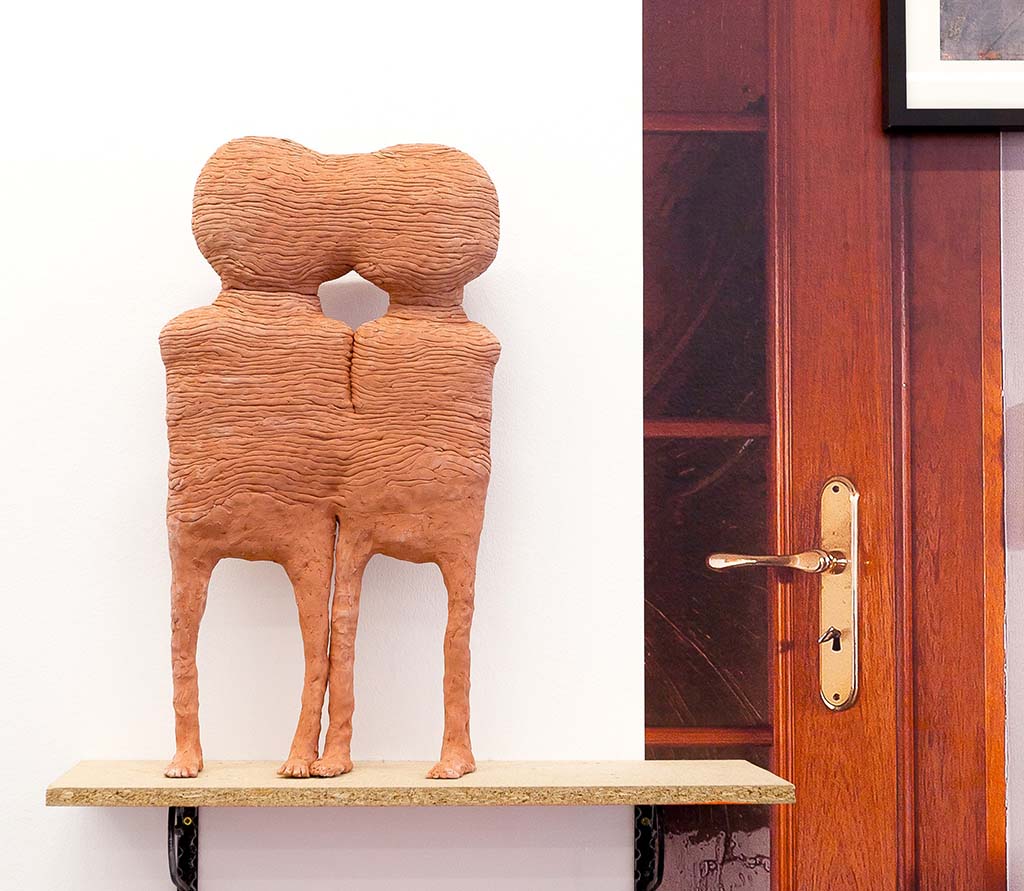

Much of Ring’s work is constructed by thin, wavering coils that build into delicate vessels. Coils draw the viewer’s eye around, inviting investigation, following contours, or strategically smoothed into patterns. Like exposed geology of the layered Earth, coiling lines form strata of the self. Sometimes the strata deviates, pinched like dumplings, and sometimes sewn with textiles, like stitches or webs.
Ring is a master of color, of compatibility, and the color begins with the clay body: “I always mix the clays,” she says, tracing this impulse back to her painting background. She blends colored clays as a painter would use a palette to achieve a desired flesh tone. Once the clay’s color is established, glaze is applied minimally, but its limited appearance makes her foundational color choices all the more powerful. Certain pieces, for example, are painted over with rainbows, not those which arch upward, but rather down, narrow, and earthbound. The color has a force of its own.
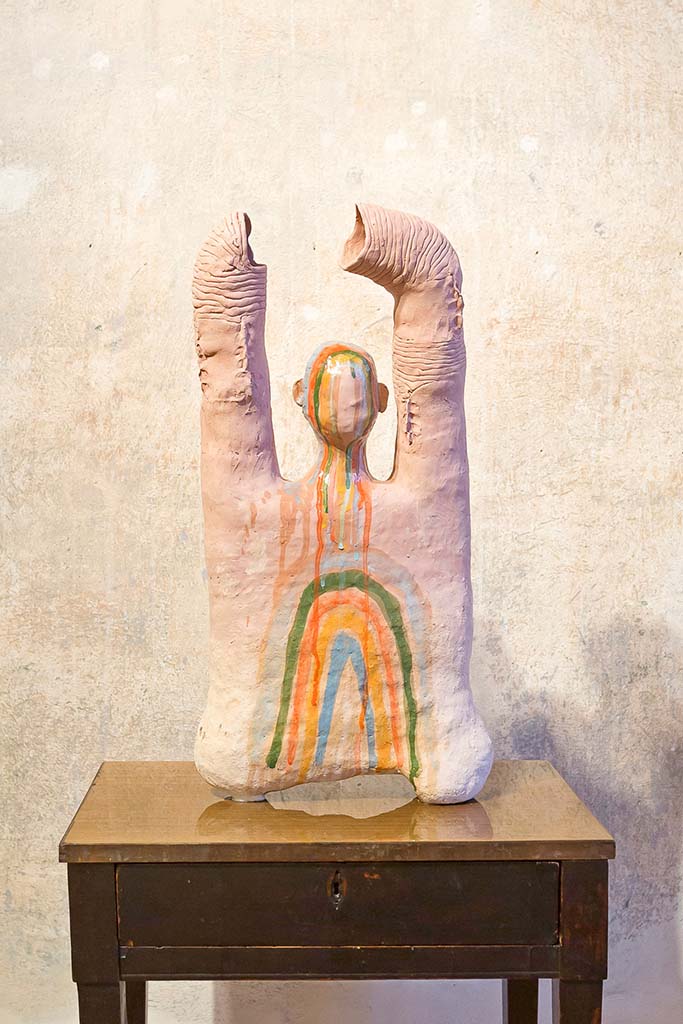
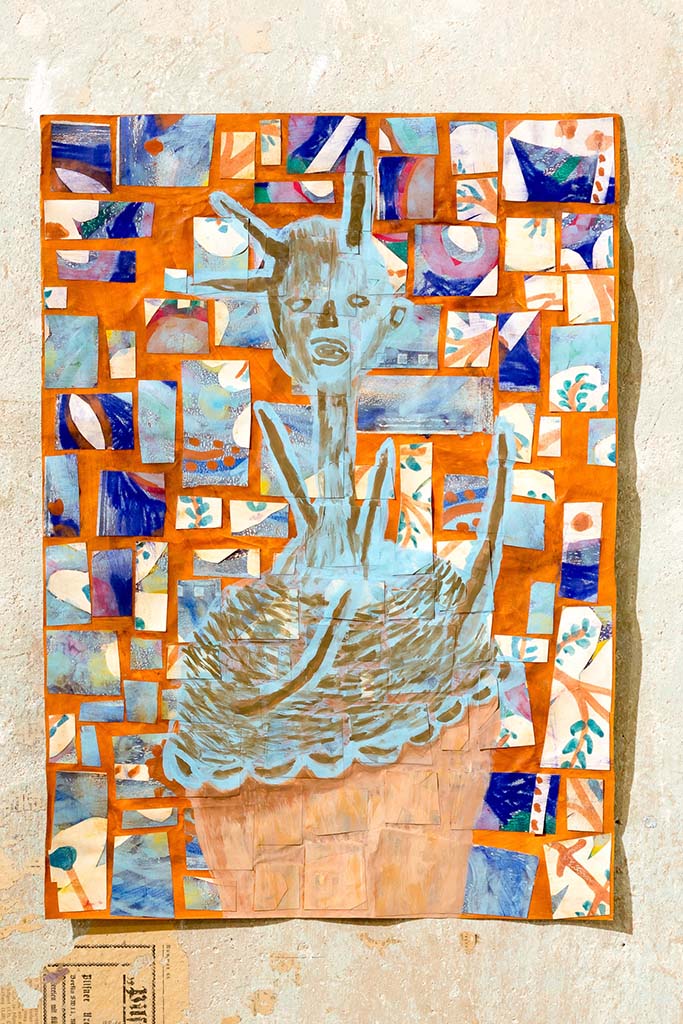
Ring’s work is all the more impressive when considered alongside the constraints she has faced. Trained in an era of comparative craft decline, Ring achieved artistic prowess despite the lack of technical training. Her processes and materials are her own: store-bought clay, store-bought glazes, these are as legitimate supplies for creation as those mixed from scratch. Even her small, 53 cm-high kiln determines the size of her work: one-meter-tall figures must be built in two or three parts, a time-sensitive process which requires an eye on wet and dry.
There is also the matter of time: alongside her studio practice, Ring earned a Master’s in Art Therapy, and now holds a professorship at the Hochschule Bielefeld University of Applied Sciences and Arts, Department of Social Work, where she instructs on aesthetics in pedagogical and social fields of action, with a focus on fine arts. Presently, her commitment to her academic career influences her studio schedule, with the question of time affecting what is created and when.
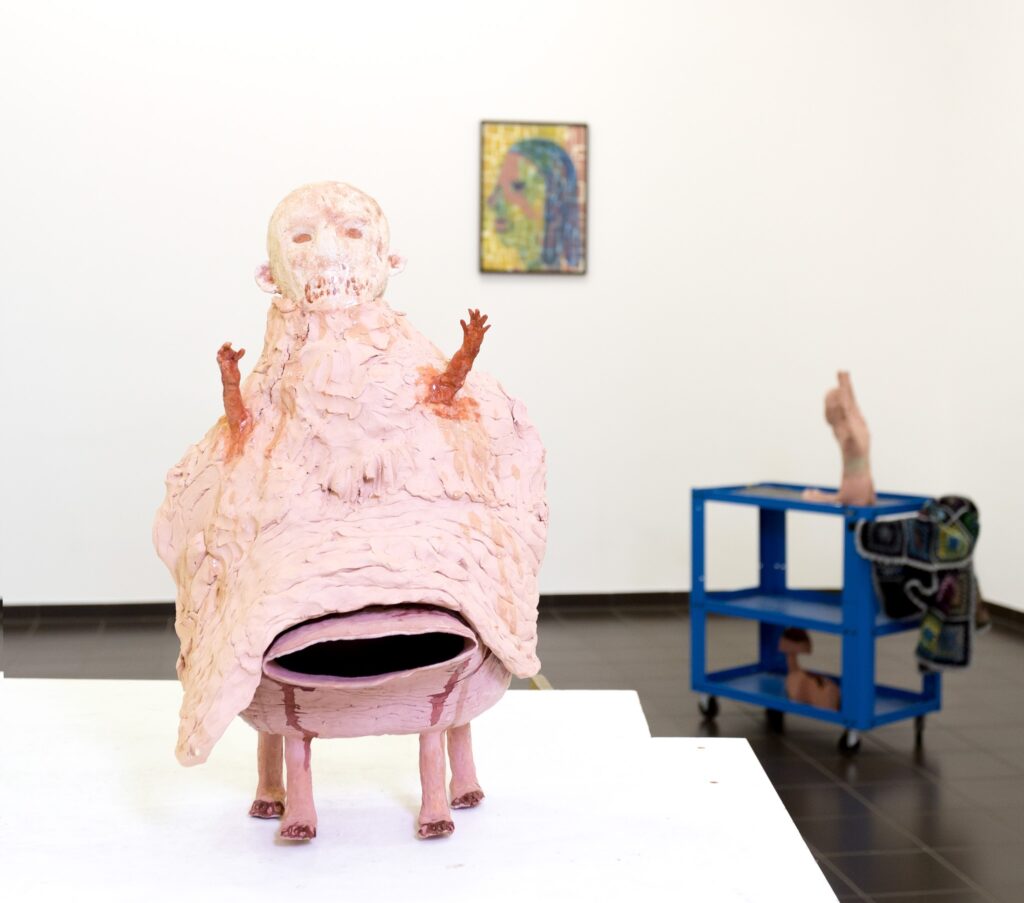
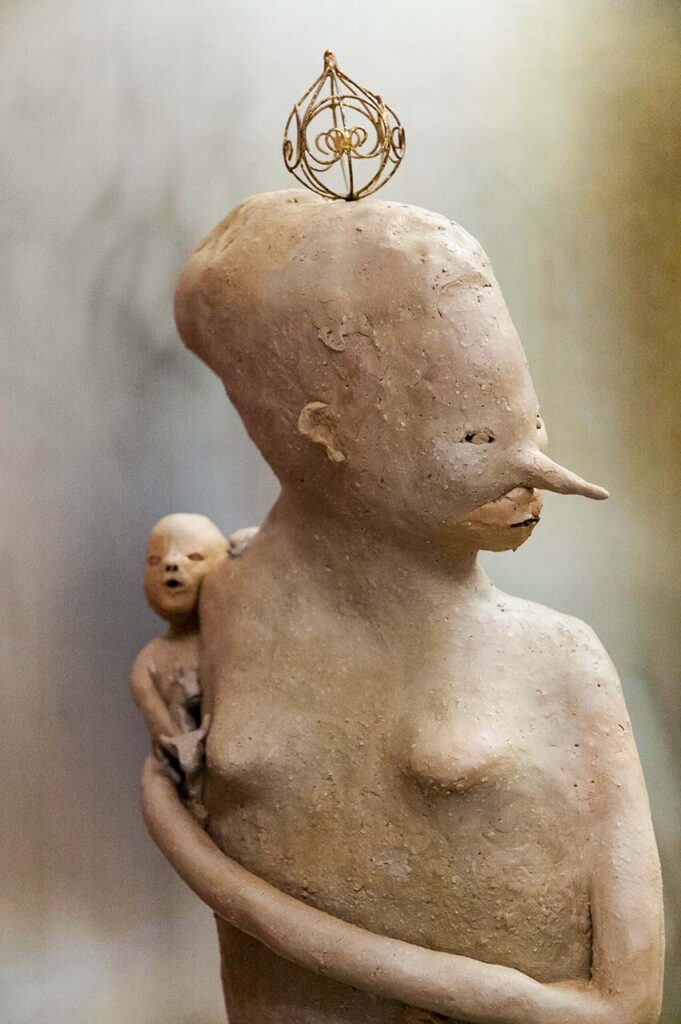
Over the decades of her exhibitions, Ring has expanded her mediums to include textiles, found and altered furniture, and works on paper (including papier-mâché). Her installations evolve through reorganizations and reinstallations.
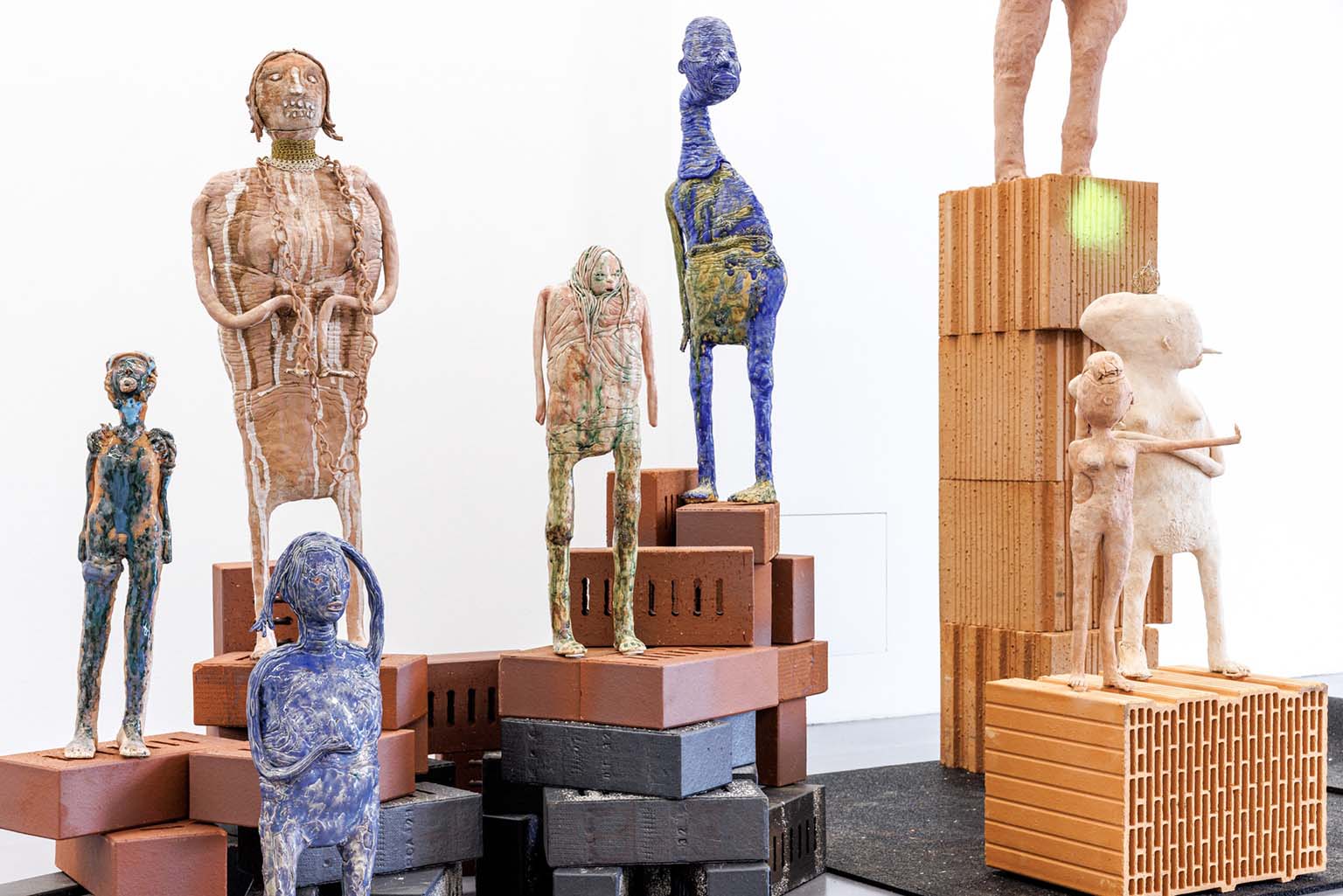
Ring’s work thrives, particularly in textured rooms where layered, plastered, painted, wallpapered, historied walls emulate the surface of the sculptures. She frequently exhibits in Kunstvereine,the German model of non-profit art institutions distinct from museums or private and commercial galleries; more allied with community arts and artists, and funded by the government.
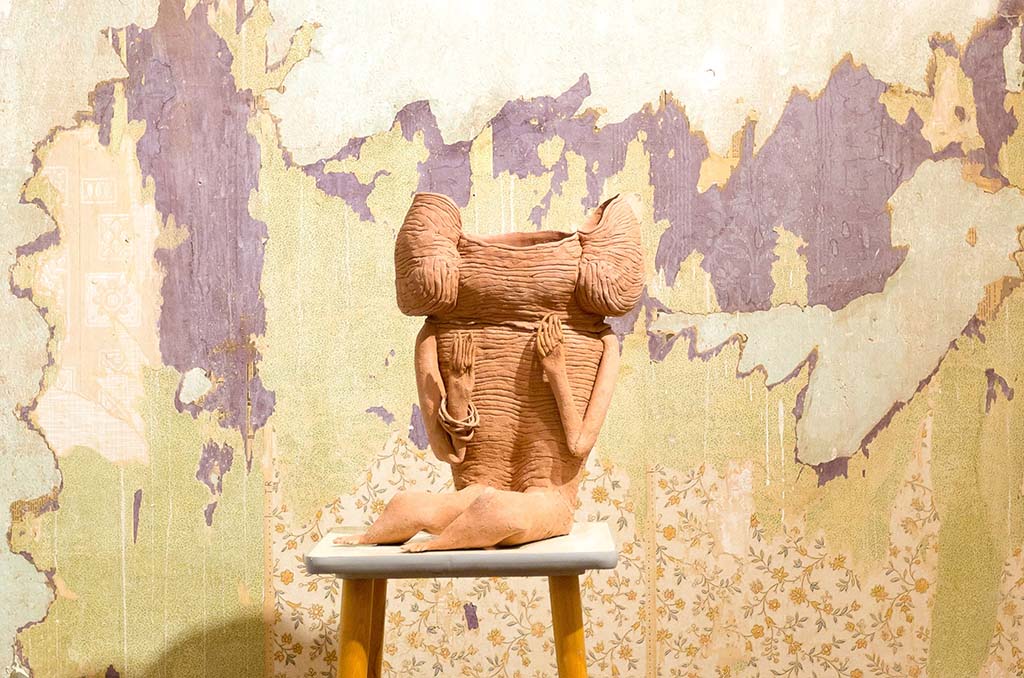

In multi-room installations, one has the sense of walking through a home, complete with family portraits caught in the middle of their days. Sometimes these tableaux vivants are rearranged across exhibitions, as if forming new coalitions. In these new locations, are we seeing another part of their day, or did they move to a new home, and if so, why?
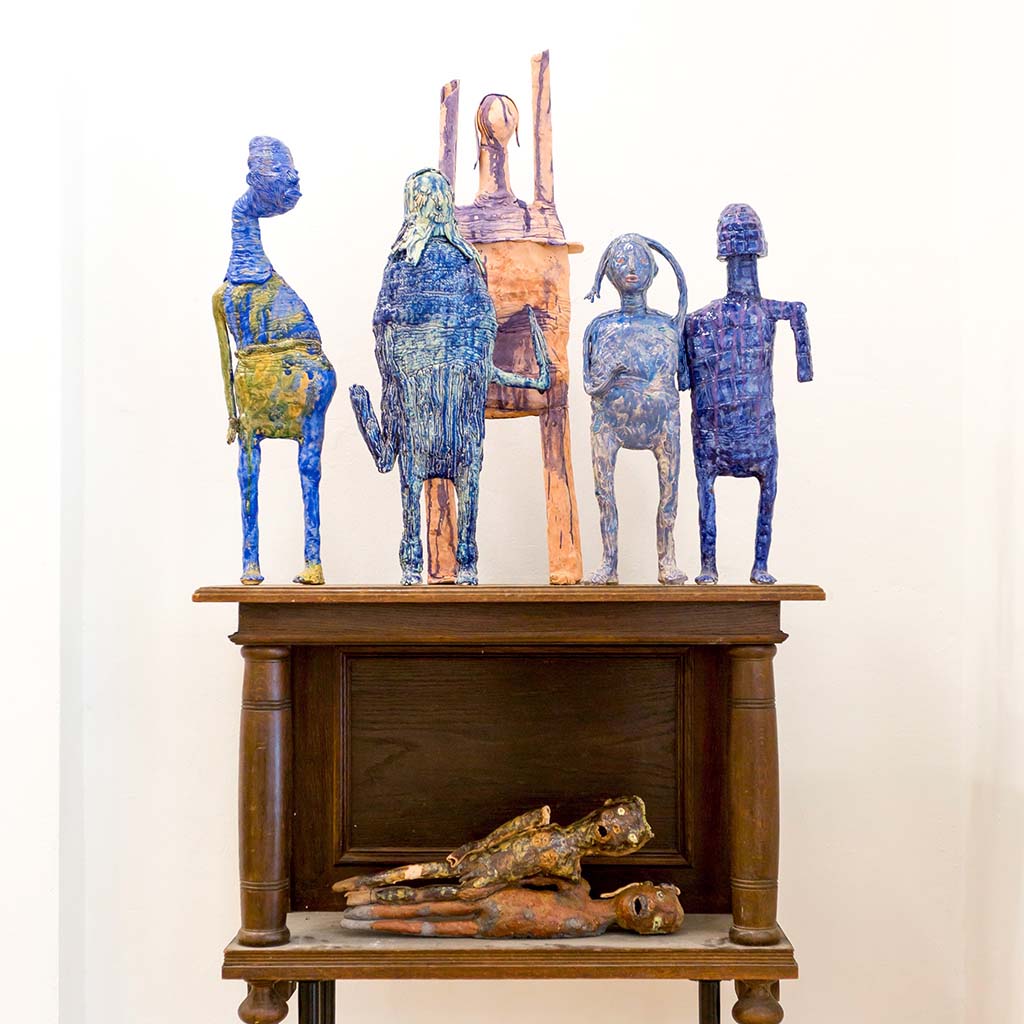

In his introduction to TEMPEL, Stefan Lüddemann contextualizes the organization of Ring’s work into exhibitions: “The temple thus becomes understood not so much as a cult site than as a place for social encounters and a protective space. In the temple, everyone can come together, regardless of social status or utilitarian considerations. The temple is the new agora….” (Each Body Its Own Temple: Susanne Ring’s Figures and New Forms of Sociality, p.9) We may be slouching toward Bethlehem, but we shelter together.
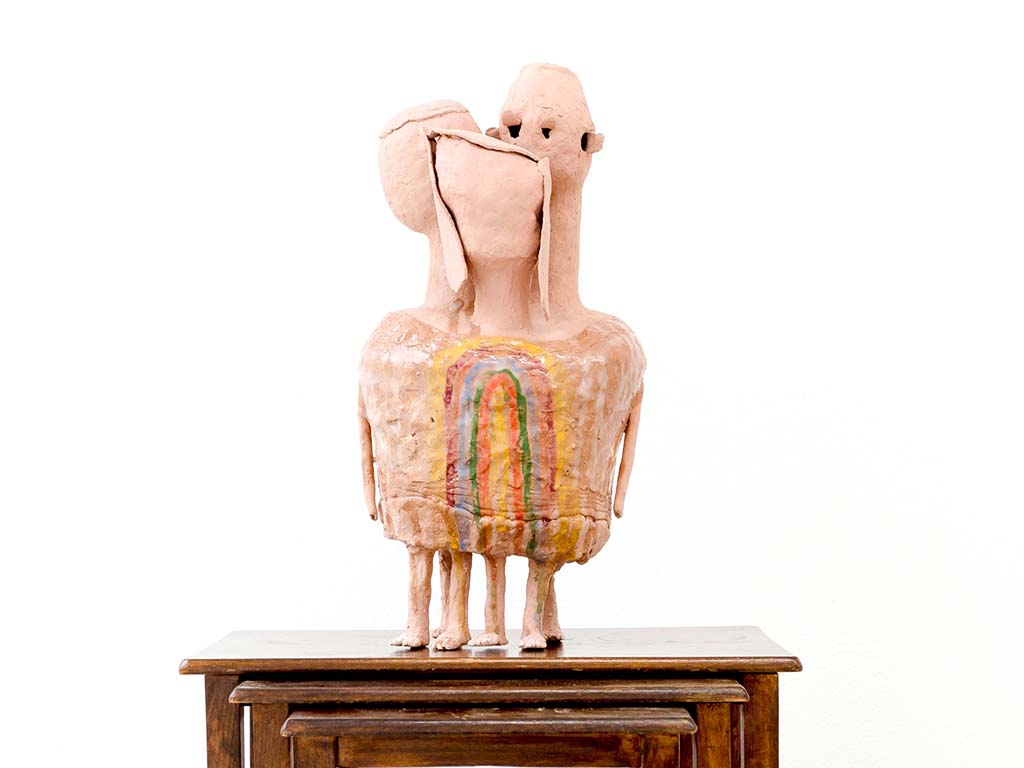
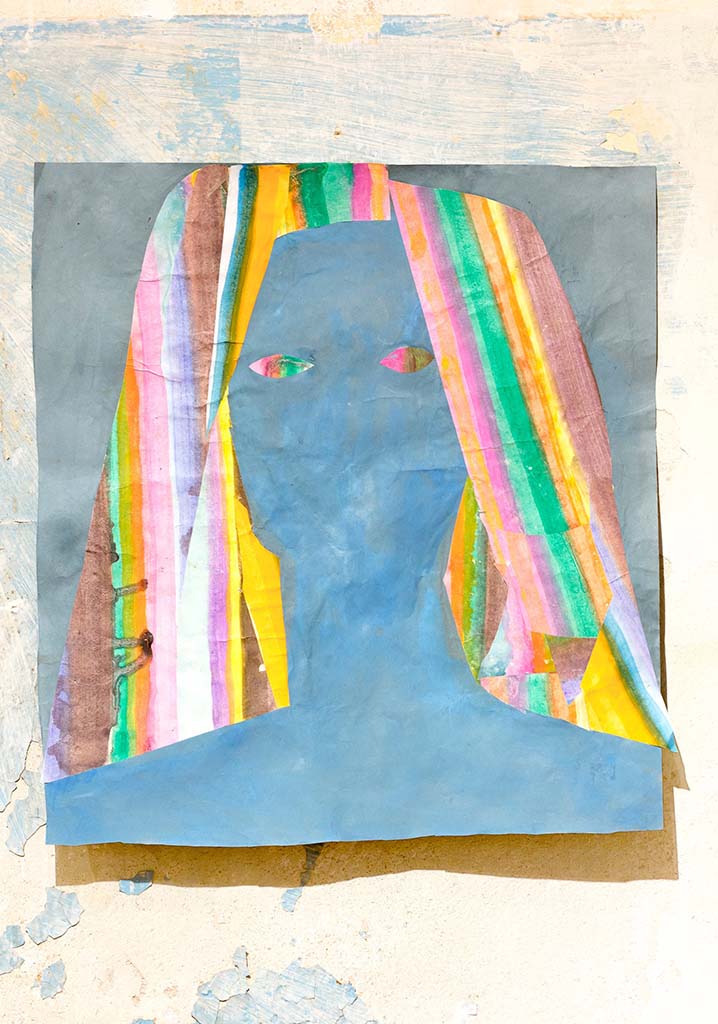
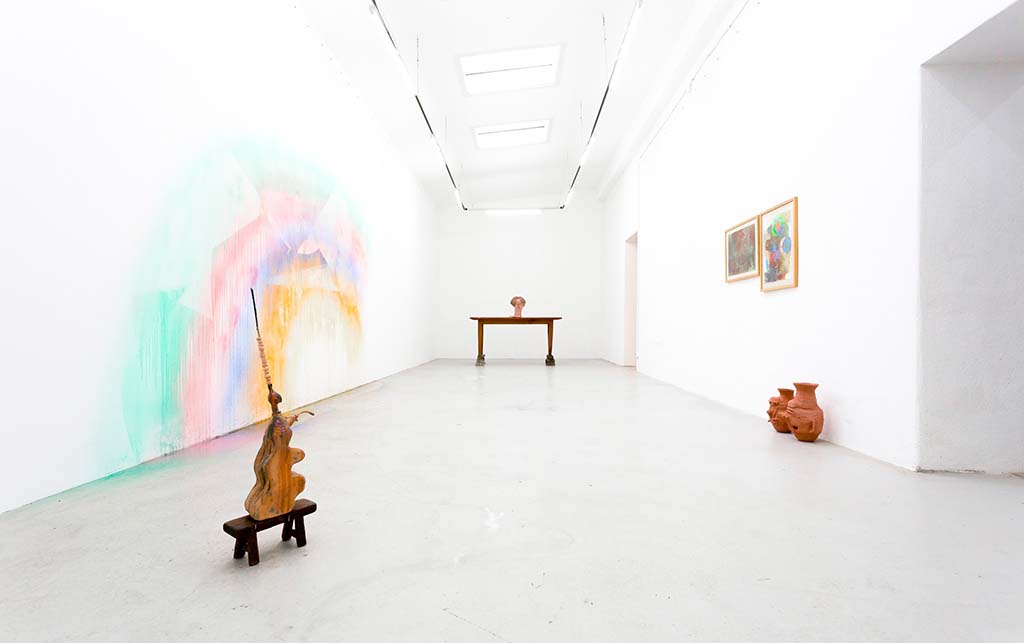
Viewing Ring’s work elicits a curious reaction: we witness perfection through flaws, beauty through strangeness, a figure frozen and dynamic and curiously alive. We encounter personalities, relationships, memories, worlds, and dynamics. Principles of design, color, space, form, and installation are all at play. A figure is displayed in the round, to be examined from all sides and eye levels, like looking into a mirror. Robotic, doll-like, primitive, abstracted, grotesque, happy like a three-legged dog, ignorant of any lack. The body as fragments, the sculpture is complete.
Learn more about Susanne Ring on her websiteand purchase the TEMPEL catalog through Kerber Verlag.